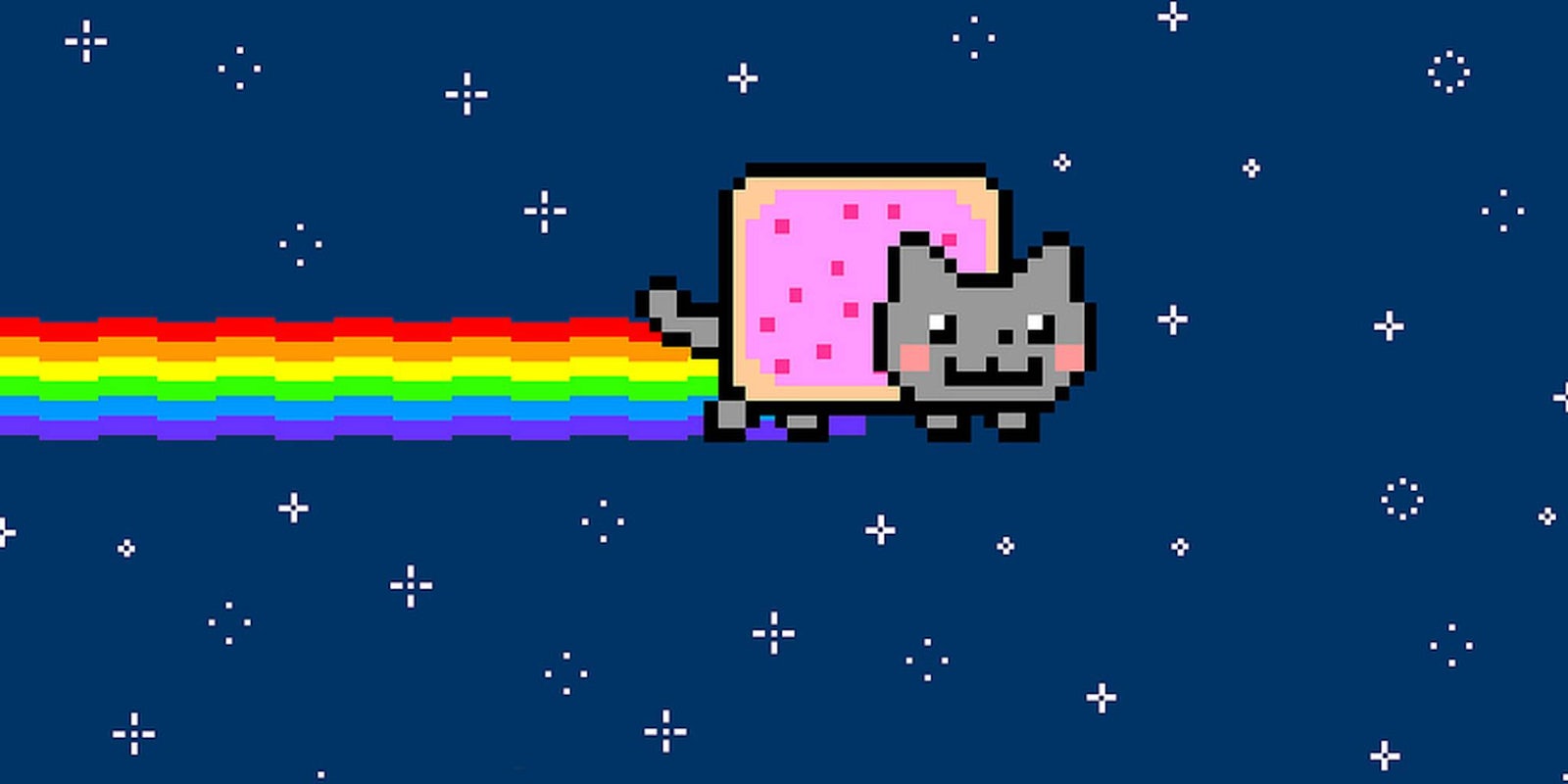You might think that the Internet’s obsession with cats started with lolcats and grew from there. But if you ask anyone from Japan, they might tell you that the popularity of cats online is a natural outgrowth of the role cats have occupied in Japanese popular culture for centuries.
Among the surprises at this year’s Otakon was a talk on Japanese culture that, on the surface at least, had little to do with anime. But as religious anthropologist Kelly Nelson, alias Akuja, explained to her packed audience, before Maru, before Totoro’s famous Catbus, and even before Hello Kitty, cats in Japan occupied central roles in pop culture and Japanese folklore.
Cats are a walking, meowing paradox in Japanese culture, represented both as kawaii (cute) and kowaii (scary). To Buddhists and Shintoists, cats are represented as creatures who are alternately sacred and cursed. A famous Japanese folk tale, “The Boy Who Drew Cats,” tells of a temple full of painted cats who come to life at night:
Japan’s religious ties to cats are so strong that Tokyo has not one but two shrines devoted to cat worship. On the west side of Tokyo, the Buddhist Gotokuji Temple showcases cats that bring the worshiper virtue. In the Shinto temple Imado Jinja on the east side of the city, cats bring the worshiper love.
The cats you see at both shrines are called maneki neko, or “beckoning cats,” and they’ve occupied a huge place of cultural importance in Japan since around the Edo period. While the most common figurines are white, different colors have their own symbolic meanings, bringing different things to the person who hosts one in their house or business. Maneki neko are found all over the world, and you probably recognize them:
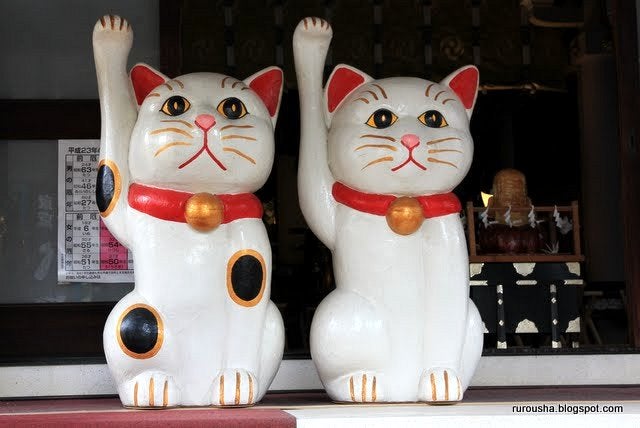
Photo via rurousha
Look familiar?
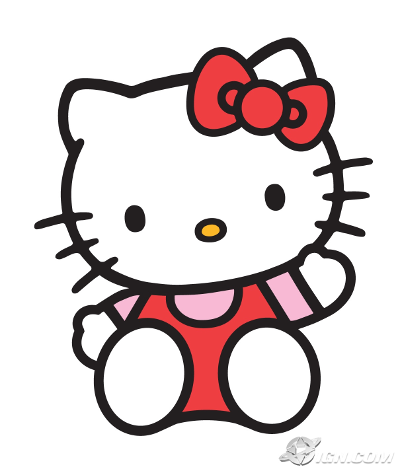
Photo via Fanpop
The main character of Hello Kitty, Kitty White, has been a cultural mainstay in Japan since 1974, and in the U.S. since 1976. With her design modeled on the maneki neko, Hello Kitty took the traditional folkloric elements of the cat as a Japanese good luck charm and turned them into a mainstream trend that has yet to fade.
Today, building off Hello Kitty and her family and friends, cats in Japan are frequently humanized, as in this popular long-running series of ads by travel company Jalan:
The anthropomorphism goes both ways, as we see with the ever-popular neko ears worn by everyone from convention-goers to everyday citizens. These ears by a Japanese company called Neurowear actually read brain waves and react when the wearer is excited:
According to Nelson, one reason for the popularity of the ears is that Japanese cultural codes make open communication difficult. But cat ears, such as the kind featured in the popular Japanese yaoi (male/male manga) Loveless, in which humans come equipped with them until losing their virginity, are a very public declaration of feelings, and remove the burden of emotional expression from the person who wears them.
Japanese culture continues to be deeply fascinated by the relationship between cats and humans. Here’s a 2000 rock song that not only puts the cat in the position of hero but pays homage to the black cats drawn by the painter from the previously mentioned fairy tale:
The cat in this story is an example of a bake neko, or a spirit cat. Bake neko can be good or evil, depending on the context, just like the maneki neko. These kind of spirit animals, more than any other representation of cats in Japan, have made their way into anime and pop culture. Here’s Kuroneko-sama (Black Cat), who hails from the iconic space western Trigun and is probably, after Hello Kitty, the most famous cartoon cat in Japan:
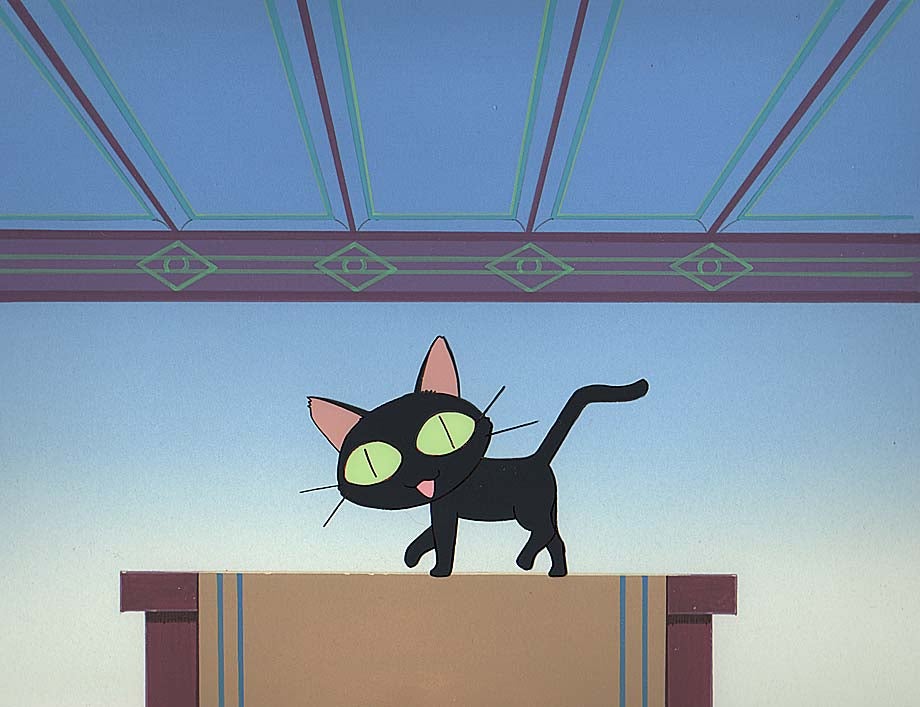
Photo via Rubberslug
Other bake neko are said to be able to enter dreams. They are often linked to vampires and demons. Even the good bake neko often have supernatural abilities, like the Pokémon Meowth and Toro the Sony Cat, both game-based characters designed upon the maneki neko.
Taken in the context of cats being used for centuries as emblems of good luck and frequently humanized spirit guides with special powers, Maru seems like a bake neko come to life:
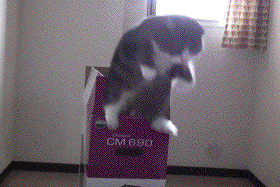
GIF via funfrom4chan/Tumblr
And popular Internet felines like Pusheen and Sushi Cat are both clearly new evolutions of the maneki neko:
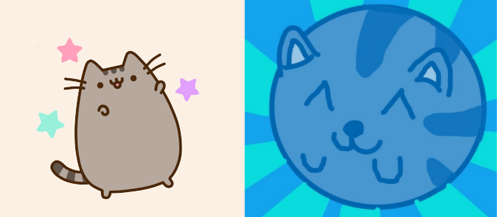
As for Nyan Cat, while the artwork wasn’t originally Japanese, it was clearly inspired by Japanese animation. And the theme song came from a Vocaloid (Japanese synthesized) song in which “nyan-nyan,” or the Japanese word for “meow,” is sung on repeat.
So while it may be easy to laud cats and the Internet as a pure creation of meme culture, there’s plenty of reason to believe we imported our cat fixation along with tentacles, Naruto, and Domokun.
Though let’s face it: It was only a matter of time before cats took over the world—along with the Internet—anyway.
Photo via dozodomo/Flickr

